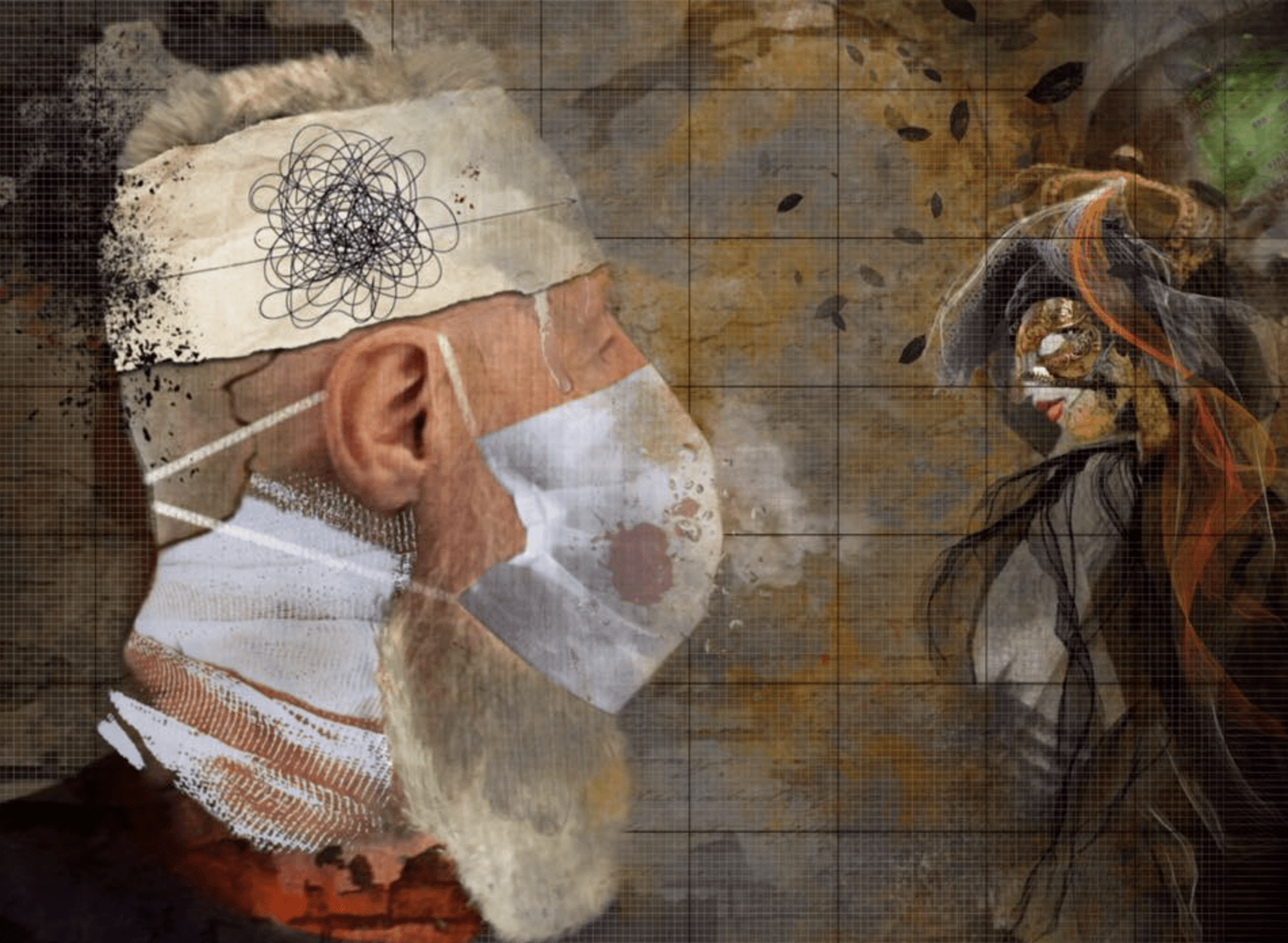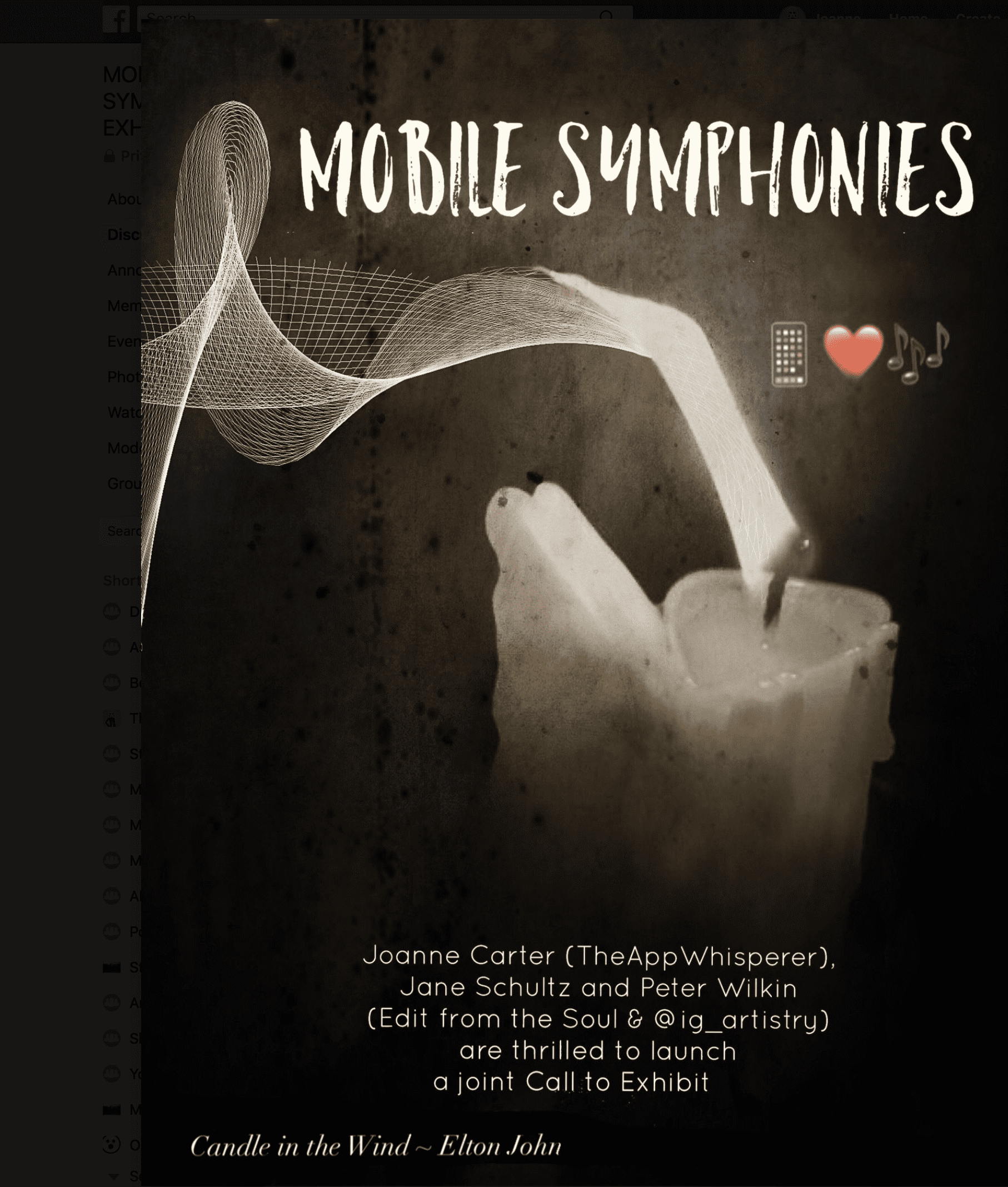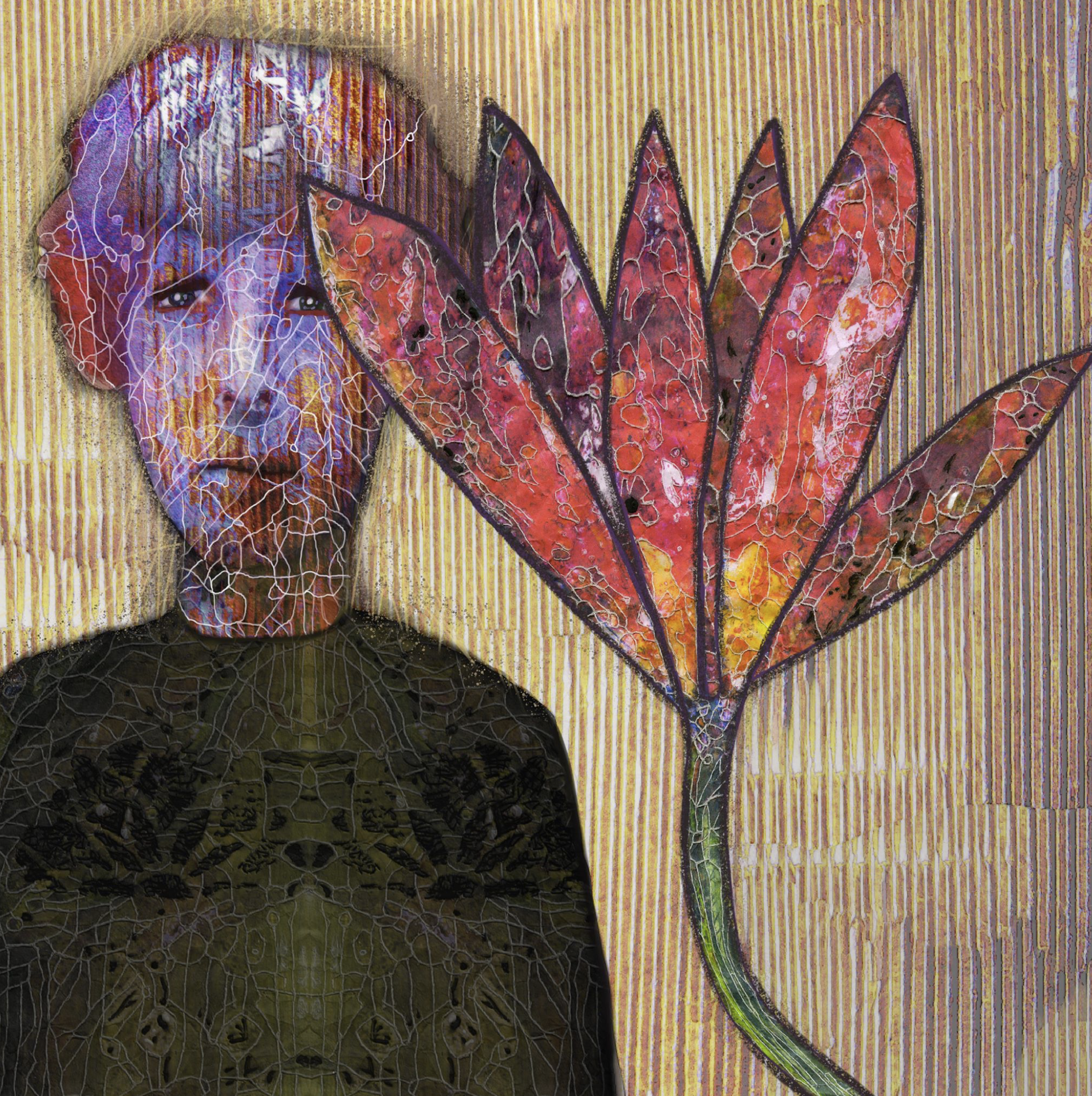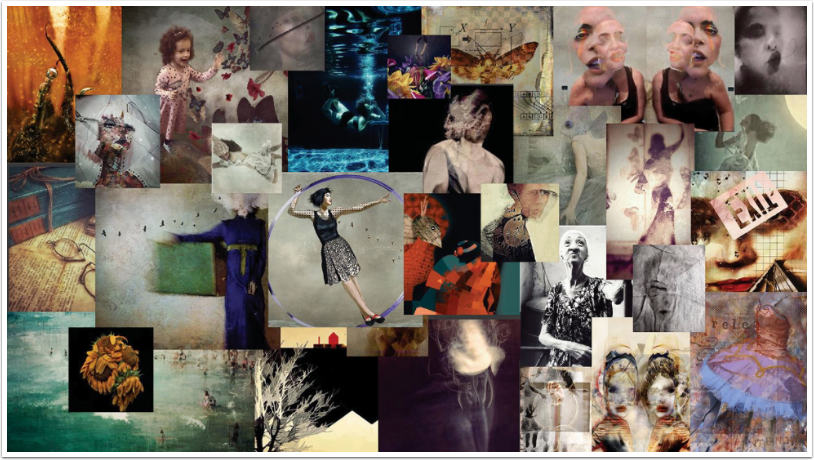
Draw the Line – Mobile Art as an Expression
If you’re not aware we have a wonderful column within TheAppWhisperer, edited by Carol Wiebe and Peter Wilkin entitled ‘Draw the Line’. This column is about adopting an initial photograph as an foundation piece, digitally enhancing it with mobile applications and then taking the image a step further by introducing drawn line, either directly drawing lines or making various marks upon the image.
To join our Facebook group for this column, please go here.
Here Peter Wilkin explains a little more about the drawn line within imagery…
Applied (as opposed to implied*) lines can be a major or a minor element, placing drawn components into the image that help to emphasise the meaning that you, as the artist, want to express. Garry Barker, a narrative artist in the UK, describes the process as “an additional signifier that can be used to ‘anchor’ a photograph’s meaning”
Judicious use of line, then, acts as a visual reinforcement to what lies beneath. Perhaps the most obvious use of line is as an injector of energy. We can make an image much more dynamic and alive purely by implying some form of movement (running, flying, shaking) with our line. We can also introduce expression by drawing in facial characteristics (smiling mouth, eyes wide open) and certain body postures (folded arms, hands on hips).
Moving away from the more obvious uses of line, we can add just enough structure to an object for it to take on a purpose. For example, we could add a window to a building and draw in objects that offer up a potential narrative: a cat in a house window or a bare light bulb hanging in an office window. Line can also be used to determine boundaries by separating figures or, alternatively, circling them and bringing them together.

But we can use line in a more abstract, suggestive manner. For example, drawing along the curves and contours of a woman can accentuate the feminine. Straight lines along the length of a person’s limbs can imply a feeling of shapelessness. Lines that surround the body’s contours at a distance can hint at dysmorphobia or maybe a feeling of dissociation from the self.
If we go a little deeper it becomes possible to create both mood and mental state. For example scribbling on a subject’s face can indicate confusion or chaos, blanking out the eyes with drawn line might represent a lack of insight or perhaps a feeling of not being seen/not existing. Covering the mouth with lines or even closing the lips with drawn stitches indicates the subject’s absence of a voice.
When we think of marks or scratches we think of damage. If we want to emphasise the harm that a piece of landscape or a human being has suffered then we can add scratches. Alternatively, introducing scratches can signify situations such as uncertainty, a lack of clarity or simply hint at the ageing process.
In mobile art it’s probably much easier to introduce scratches by way of various apps that are available such as Distressed Fx, Repix and Stackables. But what of ‘drawn line’? Again, there are so many apps that enable the artist to apply every form of line from simple dots to extremely complex geometric patterns. This flags up a moot point of whether drawn line really does mean line that is literally drawn upon an image or whether it’s also acceptable to apply line from within an app.
The binary notion of this argument suggests that only one method is ‘right’, yet why should the application of line be any different to the application of colour, shadow, blur or any other effect we mobile artists apply to our images? Line is line, however it is applied and the only requirement of it is that it is recognisable as some form of semiotic marker that has been added to the image with singular intent that in some way contributes to and strengthens the whole piece.
So when should we employ drawn line? How can we tell if added line will improve our image? Many artists rely upon their intuition; they are tuned into the gestalt of their creation and automatically seem to ‘know’ when their art ‘says just enough’. The whole of their image has reached a stage where it has become more than the sum of its parts. Rather than being an afterthought, line is much easier to integrate within an image if you have it sitting on your creative palette from the off. Understanding the potential of line is crucial and employing it with purpose is absolutely vital. Sit back from your image and ask yourself these three questions: what is the purpose of my drawn lines? Have they really achieved that purpose? How would I feel about this piece if the lines were removed? If you come back to yourself with three clear, positive answers then it’s highly likely that your lines have enhanced your art.
*Implied line ~ a line in an artwork that is not physically there but suggested by points in the artwork, e.g. a person’s eyes looking directly at another person or a particular object.
Please read…
TheAppWhisperer has always had a dual mission: to promote the most talented mobile artists of the day and to support ambitious, inquisitive viewers the world over. As the years passTheAppWhisperer has gained readers and viewers and found new venues for that exchange.
All this work thrives with the support of our community.
Please consider making a donation to TheAppWhisperer as this New Year commences because your support helps protect our independence and it means we can keep delivering the promotion of mobile artists that’s open for everyone around the world. Every contribution, however big or small, is so valuable for our future.



